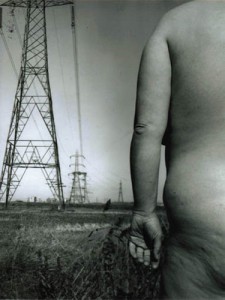
- Research the background behind these images.
A leading feminist and socialist figure in her field, Spence’s work utilised the power of the camera to challenge society on issues of gender, class, mortality, identity, and, perhaps most importantly, her own history. Her first endeavour into the field was as an assistant, and then as a high-street photographer However, as she grew tired of this “ability to create visual myths”, as she called it, she turned the camera on herself, producing her most prominent work.
Throughout her diverse projects she is well known for her highly politicised approach to photography and the representation of her own struggles with cancer.
- What does the artist want to convey?
- Similar to how health workers have to account to their patients, photographers have to account to their viewers.
- Through the title “Remodelling photohistory”, the artist seems to be trying to change her own history.
- Remodelling photohistory attempts to makes the image purposely disturbing to bring out the falsity of visual myths in commercial photography.
- A commentary on industrialization by comparing the fleshy vulnerability of her body to the metallic structures in the background.
“We would find it strange if health workers did not try to criticise their own industry, to aim for better control over their working conditions, to have accountability to their users. Yet within the various disparate workplaces of photography this is not seen as a priority. Remodelling Photohistory is an exploration of our own recent attempts to work through some aspects of this problem by ‘making strange’, using as our starting point the everyday, normalised, institutional practices and codes of ‘the trade’, re-ordered, re-modelled, re-invented, so that their common sense, unquestioned notions become disrupted.” Jo Spence & Terry Dennett
- Why do you think the artists chose to portray themselves this way?
‘Remodelling Photohistory’ (1980-82), made in collaboration with Terry Dennett, reworked genre photography with lessons learnt from Augusto Boal. Spence attempted ways of working that made the image ‘strange’ through conflating disparate and opposing iconography including landscape, portraiture and ethnographic traditions. This was also the first time that Spence questioned the assumption of naturalism within photography through role-play and performance.
- very raw
- Confronting, intimate, honest, and uncomfortable
- Connection with the audience through grotesque imagery
- Confronting the audience with the idea of naturalism in photography -related to her criticism of visual myths- and creating her own narratives through obvious disparate images.
Group: Fernandez, Song Yu, Azmir
